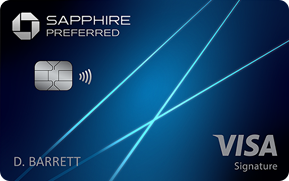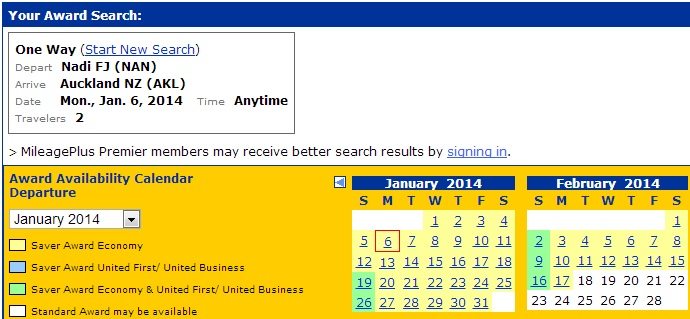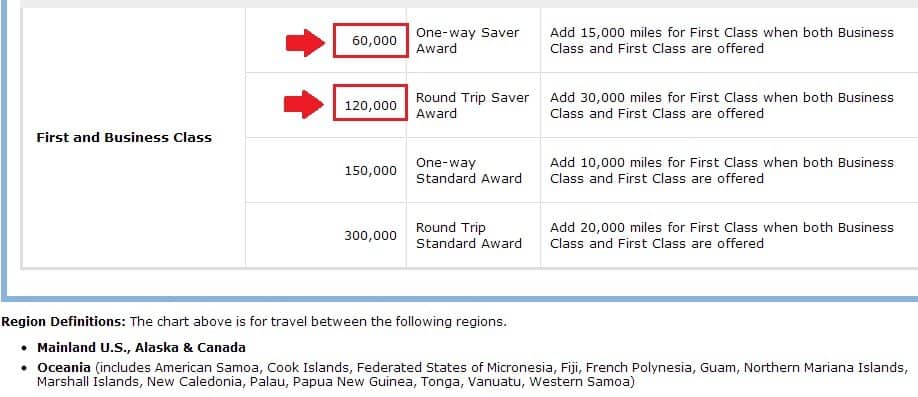MileValue is part of an affiliate sales network and receives compensation for sending traffic to partner sites, such as CreditCards.com. This compensation may impact how and where links appear on this site. This site does not include all financial companies or all available financial offers. Terms apply to American Express benefits and offers. Enrollment may be required for select American Express benefits and offers. Visit americanexpress.com to learn more.
Note: Some of the offers mentioned below may have changed or are no longer be available. You can view current offers here.
At MileValue, we constantly champion the free oneway on award tickets. Adding a free oneway is possible (to varying degrees) using all four legacy carrier’s miles. For more information, make sure to check out Scott’s comprehensive posts below:
Master Thread: Free Oneways on United Awards
Master Thread: Free Oneways on American Awards
Master Thread: Free Oneways on Delta Awards
Master Thread: Free Oneways on US Airways Awards
Free oneways are great, but nothing gets us more excited than “negative” awards. Negative awards occur when you add a segment that lowers the price of your award and allows you to add another destination to your vacation. The airline is rewarding you for flying more! For specific examples using American Airlines AAdvantage miles, make sure to check out Scott’s great post 7,500 Miles to Europe and Negative 7,500 Miles to South America.
I wanted to give another example of a negative award that we just booked for a client at our Award Booking Service, this time using United miles.
Our client wanted to travel from Los Angeles to New Zealand in business or first class and explore the country in earnest. The client wanted to depart in December and return in January, peak travel times to Down Under. This award would price at 135,000 United miles roundtrip or 67,500 oneway. On paper it was going to be a difficult award to secure.
As I detailed in the post, Where is the Award Space to Australia and New Zealand? These Exact Routes, premium cabin award space is readily available between Asia and New Zealand. This is legal routing on United awards, so it was the first place I looked. Sure enough there was plenty of space from Los Angeles to Singapore via Tokyo-Haneda. We then got our client to Christchurch, New Zealand on Singapore’s nonstop.
The client’s outbound read as follows:
- Los Angeles -> Tokyo-Haneda [ANA Business]
- Tokyo-Haneda -> Singapore [Singapore Business]
- Singapore -> Christchurch [Singapore Business]
With the outbound secured, our client asked if he could use his open jaw to return to Los Angeles from Auckland on the inbound. United allows both a stopover AND two open jaws on awards, so this was perfectly legal. We began to build his inbound originating from Auckland until he asked the million dollar question:
“Can I add a side trip anywhere?”
I began to look for great side trips that could connect in Auckland before continuing back to the US. My main weapon? Wikipedia. For more information, check out Scott’s post: How to Use Wikipedia to Book Awards Like a Pro.
Pulling up Auckland International Airport, I suggested he try Nadi, Fiji or Papeete, Tahiti. Our client opted for the former because Air New Zealand only operates the Papeete <-> Auckland flight twice-weekly and the Papeete flight was nearly twice as long.
Air New Zealand seemed to have business class space on nearly every Sunday but economy all other days. We selected a business class leg from Nadi to Auckland and then worked on getting him back to Los Angeles.
We used the same method of routing through Asia to get his party home in premium cabins. His inbound itinerary read as follows:
- Nadi, Fiji->Auckland [Air New Zealand Business]
- Auckland->Shanghai [Air New Zealand Business]
- Shanghai->Tokyo-Narita [ANA Business]
- Tokyo-Narita->Los Angeles [ANA Business]
As I mentioned above, a roundtrip business class award ticket from the US to New Zealand is 135,000 miles/person. I placed the itinerary on hold using the method I just wrote about in my post, The Trick to Hold United Awards.
I was expecting the entire itinerary to price at 270,000 miles (135,000 x 2). When I called in to finalize, the phone agent took an eternity to price it out. When she finally returned, she said the entire award would be only 255,000 miles! I couldn’t believe it!
Why did the award price lower than expected?
Simply put: an award chart sweet spot! United charges 67,500 miles for a oneway business class ticket from the US to Australia/New Zealand. United only charges 60,000 miles for a oneway business class ticket from the US to Oceania. Adding the oneway from Fiji to Auckland actually saved miles on the award ticket. United priced the award as 67,500 + 60,000 as opposed to 67,500 x 2. We received a mileage rebate for including another city!
How is the client getting from New Zealand to Fiji?
They will be purchasing a cheap economy ticket with cash. They were already making their way across New Zealand, but this award chart discrepancy allows them to save miles and extend their vacation for the cost of a oneway cash ticket. That’s a great trade off.
Could this award be even better?
Absolutely! Our client wanted to make his way around New Zealand on his own. Remember that United awards allow a stopover AND open jaw. He already was using his open jaw to arrive in Christchurch but depart from Nadi. He still had a free stopover to use.
He could have flown US -> Asia -> Christchurch (stop) -> Wellington // Nadi ->Auckland -> Asia -> US
At 127,500 miles, the above itinerary is an insane value. The stopover in Christchurch would have helped the client continue to Wellington for no charge, but he opted to drive instead. After all, New Zealand is pretty scenic. Scott knows, he just spent time in Wellington and Queenstown himself.
Recap
I inadvertently tripped over a United award chart sweet spot. The cost in miles to fly from the US to the South Pacific is 7,500 miles less than from the US to Australia/New Zealand. By adding a oneway from Fiji to Auckland on an award ticket, we lowered the cost of the ticket by 7,500 miles per person.
Tricks like these help extract the maximum value from your miles. Award charts aren’t perfect because they’re designed by humans. Using these charts and the airlines’ own routing rules to your advantage saves you miles and creates incredible vacations like the one we just booked for our client.

Chase Sapphire Preferred® Card
Just getting started in the world of points and miles? The Chase Sapphire Preferred is the best card for you to start with.
With a bonus of 60,000 points after $4,000 spend in the first 3 months, 5x points on travel booked through the Chase Travel℠ and 3x points on restaurants, streaming services, and online groceries (excluding Target, Walmart, and wholesale clubs), this card truly cannot be beat for getting started!
Editorial Disclaimer: The editorial content is not provided or commissioned by the credit card issuers. Opinions expressed here are the author’s alone, not those of the credit card issuers, and have not been reviewed, approved or otherwise endorsed by the credit card issuers.
The comments section below is not provided or commissioned by the bank advertiser. Responses have not been reviewed, approved, or otherwise endorsed by the bank advertiser. It is not the bank advertiser’s responsibility to ensure all questions are answered.







Using “Bora Bora” in the title was misleading to say the least – infact, you fail to mention anything about it in your article . That said, I am sure you already know that Air Tahiti is the only domestic carrier out of Papeete and does not and probably never will participate in any reward bookings or FF point programs. R/T fares from Papeete to BB will set you back anywhere from $475 – $560 USD depending on the season/demand.
Air Tahiti can be booked using AA miles, possibly even Avios too…if someone can find that on BA’s website, please confirm.
Incorrect. A common misconception. Air Tahiti NUI (TN), the international carrier, can be booked with DL and AA miles, while Air Tahiti (VT), the intra-islands puddle jumper, can only be purchased with cold, hard cash.
As AJK notes, confusingly enough Air Tahiti and Air Tahiti Nui are different and only Air Tahiti Nui can be booked with miles you might have (Delta and American). Getting around French Polynesia will be via cash tickets.
Could you have just made the destination Fiji in the first place? And say on the way back open jaw it in New Zealand? NAN – AKL // CHC – xxx – LAX. Would that make it 60,000 each way? I’m a little confused on how United knows what your “destination” is when making these multi-stop trips…
Of course you can make NAN your original destination, which would price out at 60K from US mainland. However, for this trip to be 60K each way (120k RT), one would have to fly both into, and out of, Oceania. The client, however, in this case wanted to see and spend time in NZ. So, if he/she wanted to fly into and out of NAN to save some miles, the client would be forced to purchase a RT revenue ticket between NAN and NZ, which he could have done if he so chose.
Great find. You guys are amazing.
I really like these type of posts – but could you add graphics from the Great Circle Mapper to them? I know you spend a lot of time on the screenshots already, but it would really help the visual learners in your readership understand the route.
That’s a great idea that Bill and I will both try to implement.
Another possible side trip would be the Cook Islands (RAR, and I would recommend a side trip to Aitutaki (AIT), although it’s not bookable on points). Of course, I’m not sure how space is on the infrequent Air New Zealand RAR-LAX flights.
You’ve probably posted about this before but another example with United is 30k miles business class from northern South America to the Caribbean, while transiting the US. I have an award on hold right now: LIM – ORD (stopover) – SJU (30K) and then SJU – LIM (20K). LIM – ORD RT would be 70k, So I’d save 20k miles in total by stopping in SJU.
Great one!
Nice post.
I’m thinking this:
1. Fly US-Fiji for 120k with stopover in AKL. Drive from AKL to CHC then fly back to AKL for less than $90 one-way or use an open jaw and save the cash. Intra-NZ flights are less expensive than a cash flight to Fiji.
2. This saves miles, less cash out of pocket and you can still see all of NZ as well as Fiji.
Maybe it can be even better than this?
That’s a great idea, and intra-NZ flights are super cheap. Here’s how to book them super cheap: https://milevalu.wpengine.com/milevalue-guide-to-dirt-cheap-domestic-flights-in-new-zealand/
Great post Bill, could you advice me on this itinerary along with the same thinking “side trip”
this is what i have booked for 6/13
sna-sfo-hnl-icn-sgn(stopover)
sgn-icn-lax(home) 9/13
could I add anything on this to somewhere in Dec-13 (hawaii, miami, orlando..?)
Depends which miles you are using. Assuming UA (subject matter of this post), you’d be entitled to an stopover* on your round trip award, and using your open jaw (and assuming no MPM problems), you’d be able to fly to those places in 12/2013.
*where you say “stopover” is really just your destination.
I don’t know if this would ticket, but if inbound is SGN-ICN-LAX(stopover)-HNL it would only be 37.5k miles for one-way business vs 60k miles if you went to Florida. But like I said, I don’t know if that would ticket as it’s very round-a-bout routing and you’re essentially backtracking… does anyone know?
No go. MPM for that route is 7557 mi. Accounting for UA’s 15% overage, that really means an MPM of 8690 mi. However, that route ( SGN-ICN-LAX-HNL) clocks in at 10,759 mi, well above the allowable limit.
MIA, or ORD, or NYC all work. (As should most places in Caribbean, Mexico, and Central America for an additional 2,500 UA miles.)
There is no MPM rule using United miles anymore.
https://milevalu.wpengine.com/i-dont-know-uniteds-award-rules/
Or there is, but it’s just not enforced by .bomb’s online award engine 😉
Then who enforces it? Certainly not the agents.
I booked the above itinerary with UA miles. so technically I can do Miami, Mexico(cancum) ?
Thanks for all the info. Learning something new all the time.